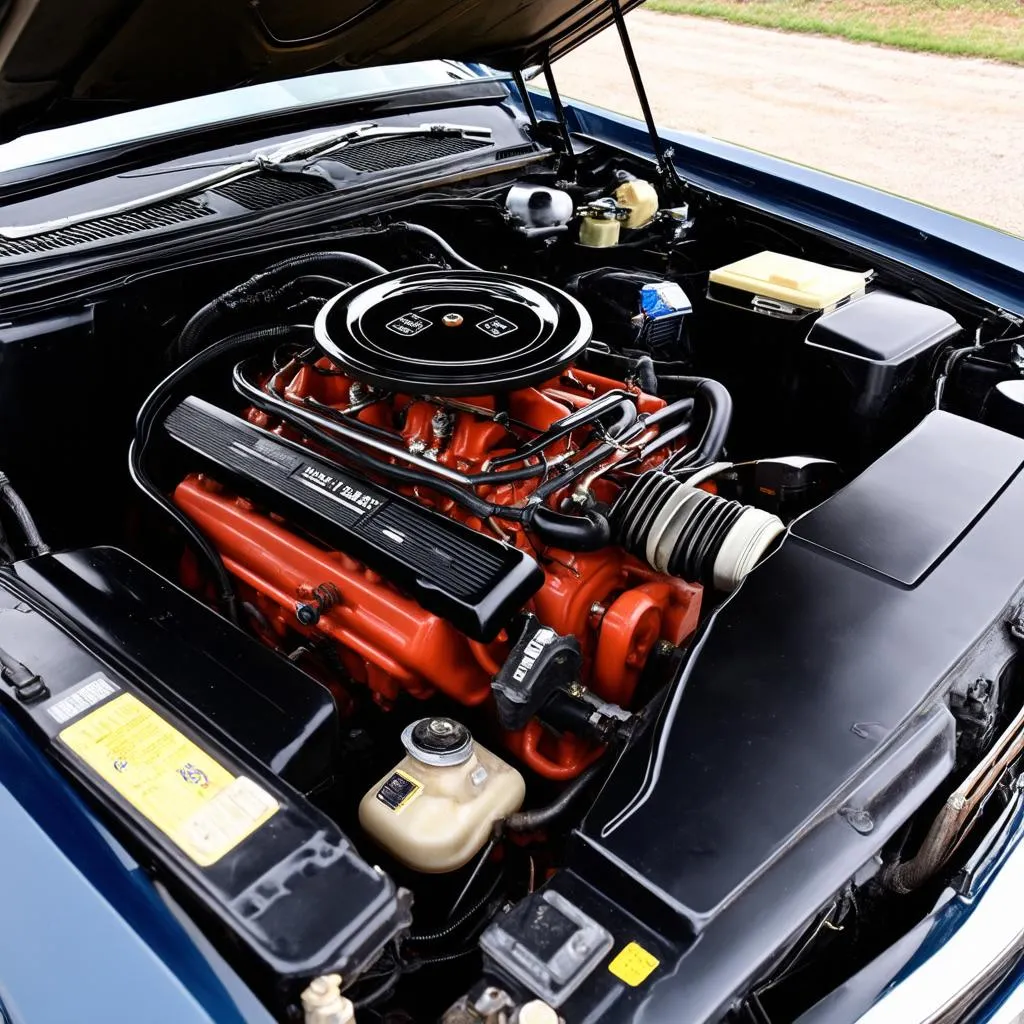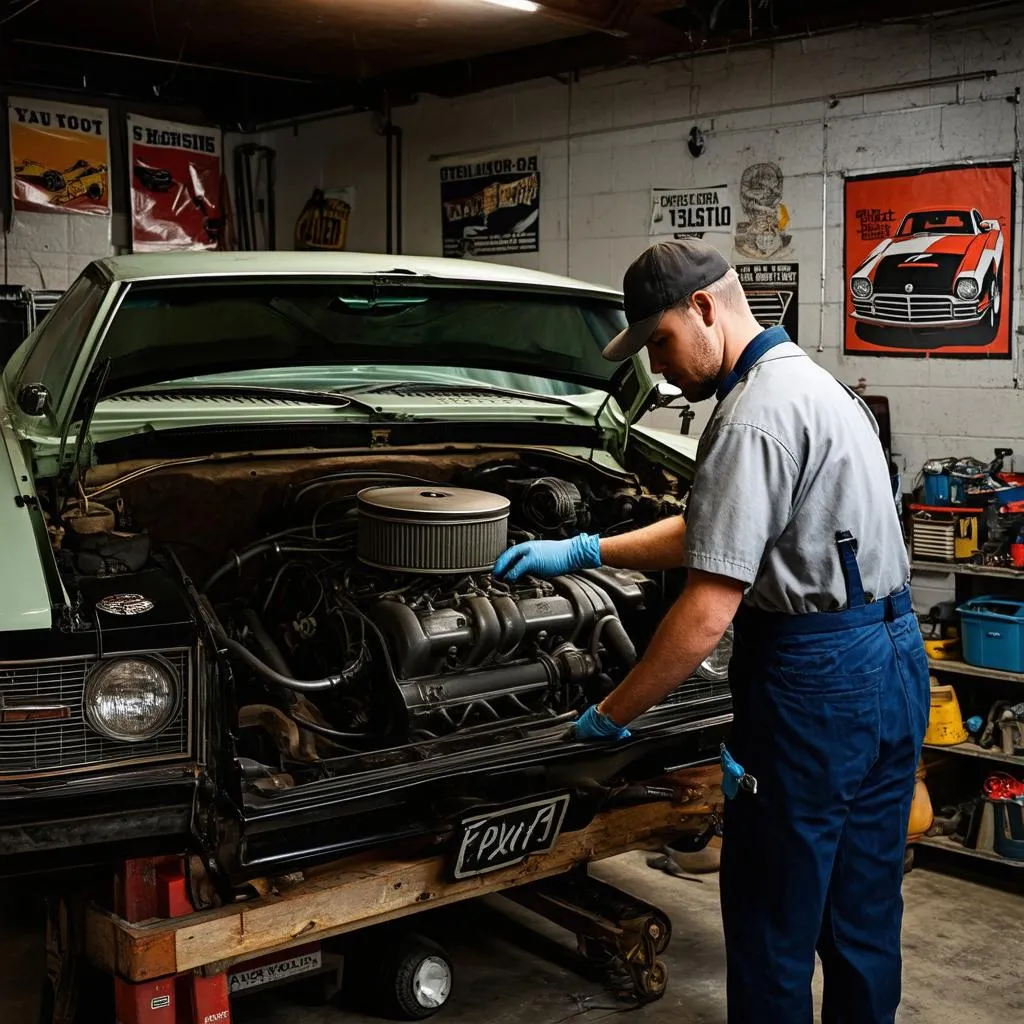“Back in my day, cars didn’t have all this fancy computer stuff!” Ever heard that from a seasoned mechanic? Well, it’s partially true. While 1985 might seem like the Stone Age of automotive technology, it was a pivotal year that saw the first whispers of On-Board Diagnostics (OBD) emerge. But if you pop the hood of a ’85 model searching for that familiar OBD port, you might be scratching your head. Let’s dive into the intriguing world of 1985 OBD, separating fact from fiction.
The Quest for the Elusive 1985 Obd Port
The truth is, the standardized OBD port we know and love today didn’t exist in 1985. Cars from this era might have had rudimentary diagnostic systems, but they were often manufacturer-specific and far from user-friendly. Imagine having to decipher blinking lights on your dashboard like some ancient code – that was the reality for many car owners!
Early Attempts at Diagnostics: A Patchwork of Solutions
1985 was a time of experimentation. Car manufacturers were just beginning to incorporate electronic engine controls, and the idea of standardized diagnostics was still in its infancy. Some manufacturers, like General Motors, introduced early versions of onboard diagnostics in certain models.
For example, a 1985 Corvette might have an Assembly Line Diagnostic Link (ALDL) connector – a precursor to the OBD-I. But even these connectors varied between makes and models. Trying to diagnose a problem often meant consulting a hefty service manual or relying on the expertise of a specialized mechanic.
 1985 Car Engine
1985 Car Engine
Why the 1985 Obd Port Matters (or Doesn’t)
You might be wondering, “Why all the fuss about a 1985 Obd Port?” Well, understanding the evolution of automotive technology helps us appreciate how far we’ve come. The lack of a standardized system in 1985 meant:
- Diagnosis was a Headache: Mechanics often relied on experience and intuition to pinpoint issues.
- Limited Information: The diagnostic systems that did exist provided minimal data compared to today’s sophisticated OBD-II.
- Repairs Could be Costly: The lack of standardized tools and information often led to longer diagnostic times and potentially more expensive repairs.
From Blinking Lights to Powerful Scan Tools: A Technological Leap
Fast forward to today, and we have the OBD-II port – a universal system that allows us to easily access a treasure trove of data about our vehicles. This revolution in diagnostics has made life easier for both car owners and mechanics.
Navigating the World of Classic Car Diagnostics
So, what if you’re the proud owner of a classic 1985 car, and that check engine light (if it even has one!) starts flashing? Here are a few tips:
- Consult Your Owner’s Manual: Your manual is your best friend. It might offer clues about your car’s specific diagnostic system.
- Find a Specialist: Mechanics specializing in classic cars often have the knowledge and tools to diagnose issues on older models. You might want to check out our article on 1985 Corvette OBD Port for more specific information.
- Embrace the Challenge: Working on a classic car can be a labor of love. Part of the charm is learning the intricacies of its unique systems.
 Vintage Car Repair
Vintage Car Repair
OBD: A Journey Through Time
While the 1985 OBD port might be a mythical creature, its absence paved the way for the sophisticated diagnostic systems we rely on today. It’s a testament to how far automotive technology has come in a relatively short period.
Looking for More Automotive Insights?
- Curious if the Mercedes-Benz 560SL has an OBD port? Our article on 560SL OBD terminal has the answer.
- Want to know more about OBD systems in Ford Mustangs? Dive into our piece about whether Fox Body Mustangs have OBD.
Need Help with Your Car’s Diagnostics?
We’re here to help! If you’re experiencing any issues with your vehicle’s diagnostics or need assistance with diagnostic tools, don’t hesitate to reach out. Contact our team of automotive experts via Whatsapp at +84767531508. We offer 24/7 support and can help get you back on the road in no time.
Remember: Just like a well-maintained engine, regular check-ups and timely diagnostics are key to keeping your car running smoothly for years to come.